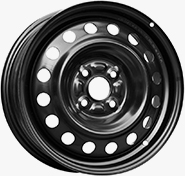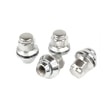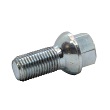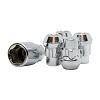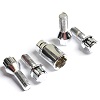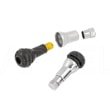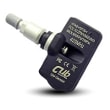What is aquaplaning and how to deal with it?
Aquaplaning is a dangerous phenomenon that can occur when driving on wet surfaces. As a result, the tire loses grip on the road, leading to loss of vehicle control. In this article, we'll explain what aquaplaning is, its causes, how to recognize it, and how to deal with it.
What is aquaplaning and why is it so dangerous?
Aquaplaning is a condition in which a car tire floats on a layer of water, losing contact with the road surface. Losing control of the vehicle can lead to an accident, so extreme caution is essential when driving in wet conditions. The main factor causing aquaplaning is excessive speed on wet roads – this combination prevents water from being drained away from the tire quickly enough.
The consequences of aquaplaning can be very serious. In extreme cases, it can result in complete loss of vehicle control, increasing the risk of a collision. Even at lower speeds, when tire traction is only partially lost, the vehicle can veer off course, potentially resulting in an accident.
It's important to understand what aquaplaning is so you can make informed decisions on the road. Avoiding excessive speed and keeping your tires in good condition are essential preventative measures. Later in this article, we'll discuss how to recognize the first signs of aquaplaning and what to do if it occurs.
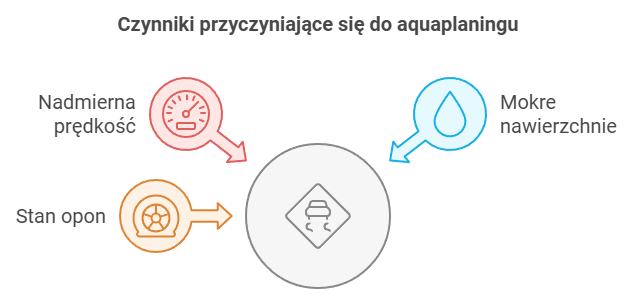
What are the most common causes of aquaplaning? Find out what increases the risk of aquaplaning.
The most common factors that increase the risk of aquaplaning are excessive speed, worn tires , and incorrect tire pressure. The type of road surface and the amount of water on it also have a significant impact on this phenomenon. Another factor is the tire tread profile, which may not be sufficiently effective at evacuating water. Loss of tire traction is directly related to these factors.
It's also worth paying attention to the quality of the road surface. Smooth roads that aren't well-drained are more susceptible to water film formation, which can lead to aquaplaning. Therefore, it's crucial to adjust your driving speed to the road conditions.
The technical condition of your vehicle also matters. Regular inspections and maintaining proper tire pressure can significantly reduce the risk of tire traction loss. It's also a good idea to invest in tires specifically designed for wet conditions, which we'll discuss later in this article.
What are the different types of aquaplaning?
Aquaplaning can take many forms, depending on road conditions and tire condition. Understanding what aquaplaning is can help you be better prepared to avoid it. These include:
- dynamic aquaplaning , when water is not removed from under the tire quickly enough;
- Static aquaplaning , which occurs at very low speeds when the tire is unable to displace water.
Dynamic aquaplaning most often occurs at higher speeds when the tire is unable to evacuate large amounts of water. In such situations, the vehicle can float on a layer of water, leading to loss of contact with the road surface. This type of aquaplaning is particularly dangerous on highways and expressways.
Static aquaplaning, on the other hand, can occur even at low speeds when the tire is unable to penetrate the water layer, for example, when pulling away. This is less common but still dangerous, especially in urban conditions, where a sudden loss of traction can lead to collisions with other vehicles or pedestrians.
How to recognize the first signs of aquaplaning while driving?
The first signs of aquaplaning include a feeling of the car floating on the road, a lack of steering response, and a sudden increase in engine revs when decelerating. If you notice your vehicle reacting this way, you're likely experiencing aquaplaning. In this case, it's important to remain calm and avoid sudden steering movements.
Another warning sign may be a sudden decrease in tire rolling noise. Under normal wet conditions, you can hear the characteristic sound of water being drained through the tire tread. When the tire loses traction, this sound may change, signaling that the tire has lost contact with the road.
It's also worth paying attention to your vehicle's braking response. If your car begins to skid or your brakes don't work as effectively as usual, it could be a sign of aquaplaning. In these cases, it's best to gradually reduce speed and avoid sudden maneuvers to regain control of your vehicle.
What to do if you lose traction? Step by step, regain control of your vehicle.
If you experience tire traction loss, the first step is to gently lift your foot off the accelerator. Avoid heavy braking, as this can worsen the situation. Try to maintain your direction and allow the car to slow down on its own. Once traction is regained, continue driving at a lower speed to avoid re-aquaplaning.
The next step is to gently turn the steering wheel in the direction you want to go. Remember to avoid sudden movements, which can further reduce your control. In aquaplaning situations, it's crucial to remain calm and composed.
If your vehicle is equipped with assistance systems like ABS (Anti-lock Braking System) or ESP (Electronic Stability Program), let them do their thing. These systems are designed to help you regain control of your vehicle. They can significantly increase your chances of safely recovering from an aquaplaning situation. More information on this topic can be found below.

How to prevent aquaplaning?
Preventing aquaplaning requires several steps. First and foremost , maintain proper tire pressure and check their condition regularly . Research and carefully decide which rain tires are best for your vehicle and driving conditions. Avoid excessive speed , especially on wet surfaces, and be aware of weather conditions. Regular vehicle inspections can also help prevent aquaplaning.
It's also worth investing in high-quality tires designed for wet conditions. Tires like Kumho, Continental, and Dunlop offer excellent traction and effective water drainage. You'll find detailed information about these tires later in this article.
Remember that road safety depends largely on your caution and preparation. Regularly checking your vehicle's technical condition and adjusting your speed to road conditions are key to preventing aquaplaning.
How do ESP and traction control systems help combat aquaplaning?
Modern cars are equipped with ESP and traction control systems that help control the vehicle in the event of aquaplaning. These systems automatically detect loss of traction and adjust braking force and engine torque accordingly to help the driver regain control of the vehicle.
The ESP system works by monitoring vehicle movements and comparing them with the driver's intentions, based on data from sensors in the steering wheel, accelerator pedal, and wheels. When it detects irregularities, such as skidding, it automatically adjusts the braking force on individual wheels to stabilize the vehicle.
Traction control, on the other hand, helps prevent tire loss of grip when accelerating on wet roads. This system monitors wheel speed and, if excessive slippage is detected, reduces engine torque or brakes the appropriate wheel to restore traction.
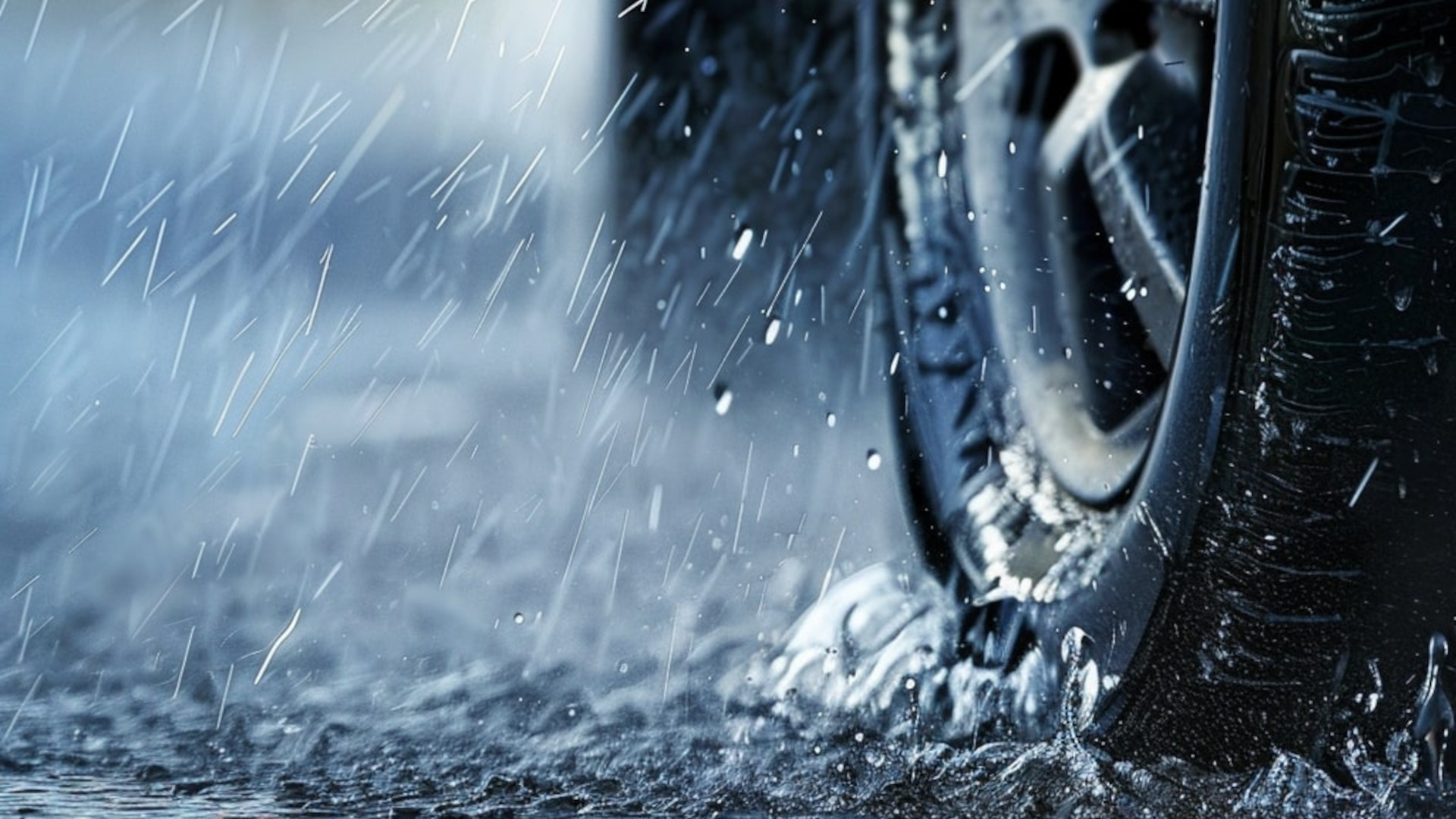
Which rain tires should you choose to minimize the risk of aquaplaning?
Choosing the right tires is crucial to minimizing the risk of aquaplaning. There are several tire models that are particularly effective on wet surfaces.
High grip on wet surfaces – Kumho Ecsta HM KH31
The Kumho Ecsta HM KH31 195/55 R16 87V tires offer excellent wet grip, significantly reducing the risk of aquaplaning. Their innovative tread effectively disperses water from under the tire, providing better vehicle control.
The high-quality materials used in the Kumho Ecsta HM KH31 tires guarantee long life and reliability. This makes them an ideal choice for drivers who frequently drive in wet conditions. Kumho tires also provide a comfortable ride by reducing noise and vibration.
Innovative tread as a key to water drainage – Continental ContiSportContact
The Continental ContiSportContact 2 195/45 R15 78V tires feature an innovative tread that effectively disperses water, minimizing the risk of aquaplaning. This gives the driver greater control of the vehicle even in challenging conditions.
The technology used in Continental ContiSportContact tires provides exceptional wet grip, which is crucial for driving safety. Continental tires are also known for their high durability and excellent performance in various weather conditions, making them a versatile choice for demanding drivers.
Effective support in the fight against aquaplaning – Dunlop SP Winter Sport 3D
The Dunlop SP Winter Sport 3D 295/30 R19 100W tires are designed for maximum grip on wet surfaces, making them an ideal choice for minimizing the risk of aquaplaning. Their special tread design ensures effective water drainage.
Dunlop SP Winter Sport 3D tires offer not only high traction but also excellent stability when driving on wet surfaces. Dunlop tires are also known for their exceptional durability and reliability – drivers who prioritize safety and comfort in challenging weather conditions should be satisfied with this tire model.
Aquaplaning is a serious hazard that can lead to loss of vehicle control. To prevent aquaplaning, it's important to follow a few simple rules: maintain proper tire pressure, choose tires with high wet grip, and avoid excessive speed. Furthermore, ESP and traction control systems can also help manage situations where a tire loses traction. Following these tips will allow you to drive safely even in challenging weather conditions.

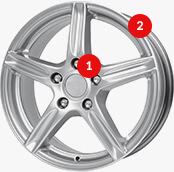

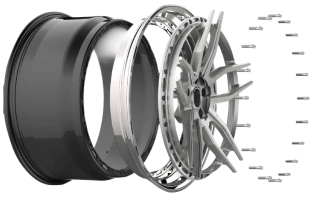
 Modern design
Modern design Perfect fit
Perfect fit High durability
High durability Free shipping within 24 hours
Free shipping within 24 hours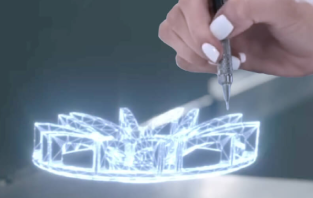
 Individual project
Individual project Dedicated caregiver
Dedicated caregiver